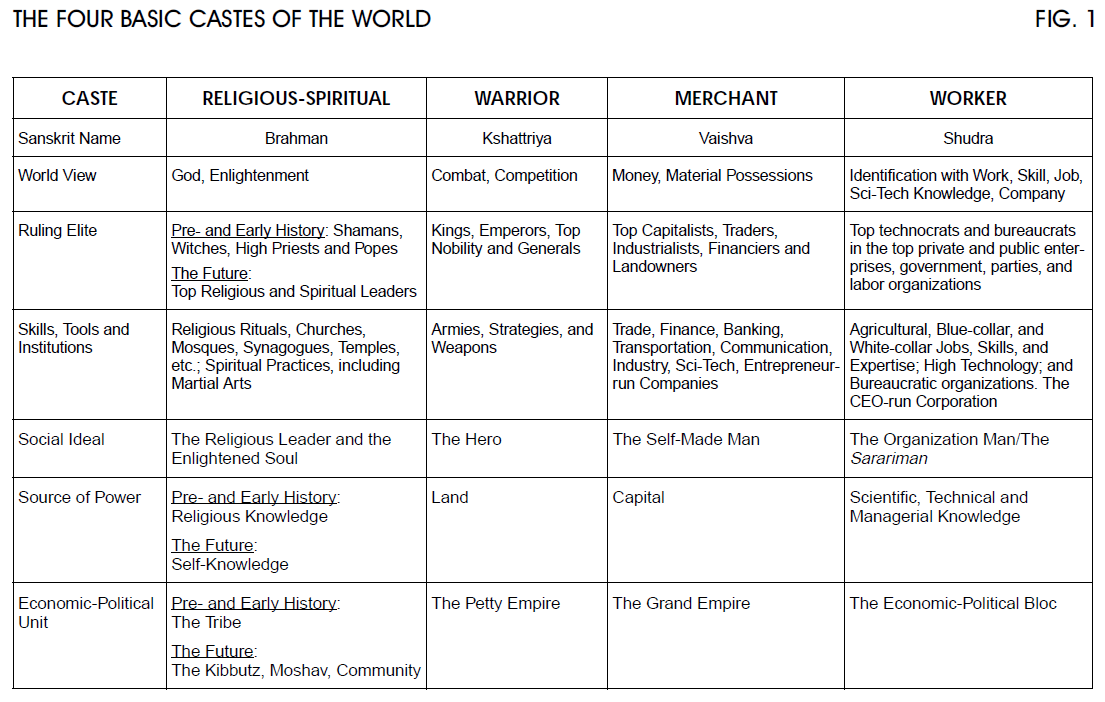Integrating Jean Gebser and Lawrence Taub
Integrating Jean Gebser and Lawrence Taub
Text
This short essay compares the models of Jean Gebser (The Ever-Present Origin) and Lawrence Taub (The Spiritual Imperative: Sex, Age and Caste Move the Future). Both Gebser and Taub offer us a macrohistory of the development of humanity. Gebser’s model is primarily vertical, Taub’s model primarily horizontal in that he provides a timeline with a cultural-geographic dimension.
Gebser’s model traces the development human consciousness through the age in five stages - the Archaic, Magic, Mythical, Mental and Integral structures of consciousness. This makes his model vertical, from lower to higher consciousness. I take Gebser’s use of the word consciousness to mean “perception of what we perceive to be reality.”
Taub relies on three models but we will focus on the Caste Model. His starting point is the ancient Indian notion of Caste, and he traces development of humanity, and implicitly human consciousness, through the four caste stage: Spiritual, Warrior, Merchant and Worker Caste. Note that the Caste System that evolved later is a corruption of the ancient notion of caste.
The Caste Model
Gebser’s model is better known (an excellent summary is here), so let’s only describe Taub’s model in some detail.
Ancient Indian sages believed humanity, in all its diversity, can be “classified” in four generic types. Each individual has elements of the four castes, but one caste (trait) usually dominates in most individuals. A table of the four castes from Taub’s book illustrates the seven key features of the four castes:[1] their world view, ruling elite, skill and tools, social ideal, source of power and economic-political unit.
In ancient Indian thought, the four castes take turns in “ruling the word.” They are the prominent caste at a given age in an everlasting cycle consistent with the cyclical view of time in India. Taub’s remarkable claim is that the four castes ages can be associated with actual historical periods and cultural-geographic regions. In other words, Taub’s Caste Model has two parameters: time (vertical, historical period) and space (horizontal, geographic region).
Cultural-geographic dimension
Taub’s Caste Model does not contradict Gebser’s model, and abstractly they can be seen as complementary. However, the latter is focused on the vertical axis of human history but offers limited insight for the horizontal. The first three of Gebser’s five stages are global, the Mental is situated in Europe, but he does not situate the Integral stage.
Lacking a cultural-geographic dimension, Gebser’s model does not have the predictive power offered by Taub's model. The Caste Model offers insight why China is poised to be the next prominent region. Using the Caste Model, Taub was also able to predict seemingly unpredictable events, among them the religious-spiritual revolt in Iran and the growth of fundamentalism.
Integration
Both Gebser's and Taub’s model can present difficult hurdles for those unfamiliar with or resistant to big picture models. The Caste Model requires the reader to (1) accept the notion of caste and (2) that the cultural-geographic regions correspond with the four caste types. It asks readers to accept an entirely new world view and suspend a Euro-centric view of history. The reader also has to comprehend the integration of the Caste Model with the Sex and Age Models.
Gebser’s model requires us to accept his use and definition of consciousness and his use of the word “perspective.” The latter is based on the incorrect assumption that only Europe developed a pictorial projection system. China developed axonometry, conceptually related to the so-called “aperspectival” view but developed in the “pre-perspectival” Magic stage. The Russian Supremacists used axonometry to escape the perspectival view Gebser describes, best illustrated in El Lissitzky’s Proun series. Unlike linear perspective, axonometry also offer a view of infinity.
Both Gebser and Taub provide remarkable insight in the evolution of humanity. Gebser’s model arguably sheds more light on human (and one’s individual) consciousness, Taub’s model helps us to understand how and why consciousness changes from one cultural-geographic regions to the next. It is for the reader to decide to what extend the models overlap and can be integrated.
